Video Marketing Beyond YouTube in 2023
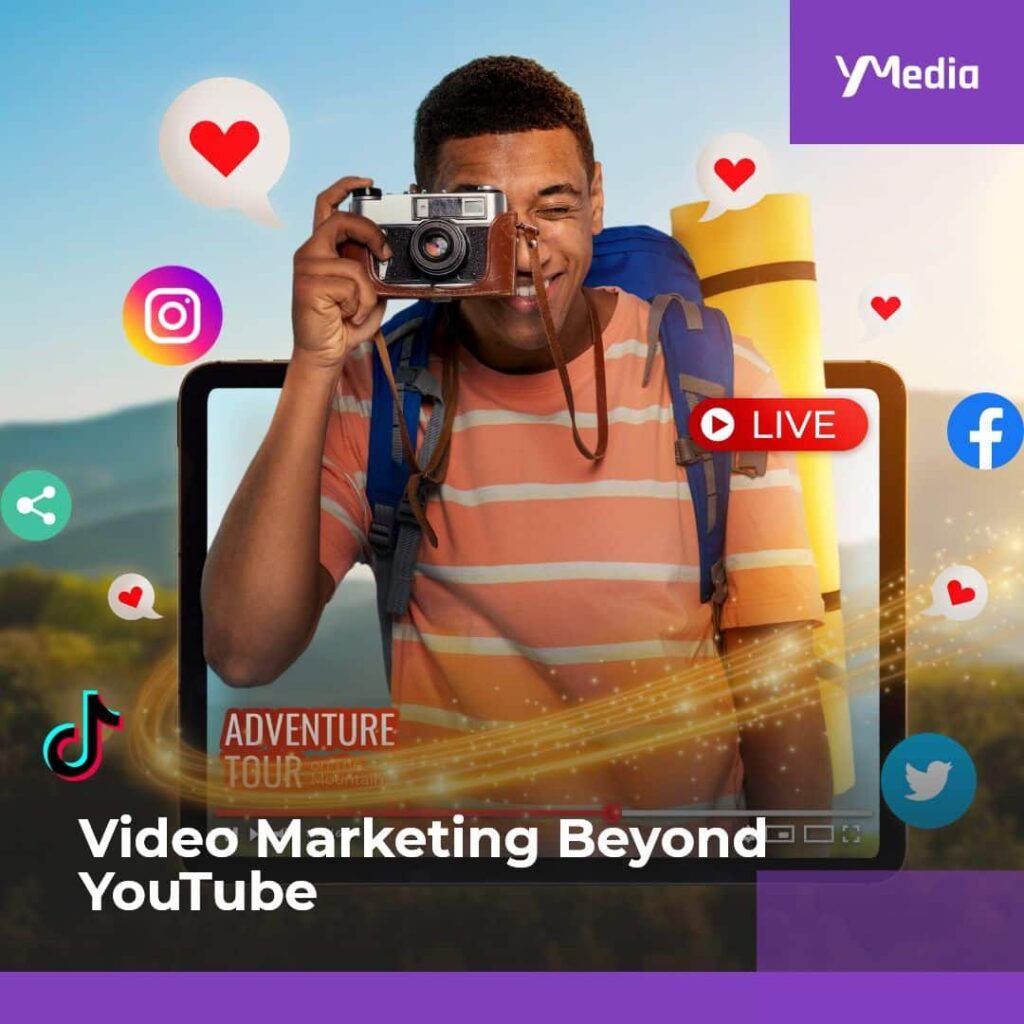
Business professionals are increasingly relying on video marketing to reach their target audiences. 86% of marketers rely on digital video marketing to distribute content to their audiences. One can’t blame them. Surveys show 96% of marketers say video marketing has increased user understanding of the product or service they offer. The video format is highly engaging and so, it works! However, most marketers make the mistake of not exploring video marketing beyond YouTube.
Depending only on YouTube for video marketing can limit your reach. Many viable YouTube ube alternatives like Vimeo, Tiktok have emerged in digital video marketing and they cannot be ignored!
In 2023, smart video marketers have to employ a cross-channel approach to get the most mileage from their video content. Let’s first understand the pitfalls of not expanding video marketing beyond YouTube.
Why Look for Video Marketing Beyond YouTube?

Source | Video marketing beyond YouTube
YouTube boasts an enormous user base, with over 2 billion logged-in users visiting the platform each month. While this massive reach is undoubtedly a compelling draw for content creators, fixating solely on YouTube can inadvertently lead to missing out on a substantial audience found on other video-sharing platforms.
To harness the full potential of your video content and ensure it reaches your ideal viewers, it’s important to adopt a diversified digital video marketing strategy that extends across multiple platforms.
Advantages of implementing video marketing beyond YouTube are:
- Expanded audience reach: Every video-sharing platform has its distinct user base, each with its own preferences and habits. By distributing your videos across multiple platforms, you expose your content to a broader spectrum of potential customers. This is especially important when your target demographic is concentrated on a specific platform.
- Increased engagement: Each platform employs unique algorithms and harbors its own community culture, shaping the way users interact with video content. Diversifying your content across different platforms allows you to tap into various engagement opportunities each platform offers. Whether it’s utilizing short-form content on a platform like TikTok or fostering in-depth discussions on a platform like LinkedIn, you can tailor your content to resonate with the distinct engagement patterns of each audience.
- Built-in audience growth: Expanding your presence to multiple platforms kickstarts audience growth organically. As your content gains traction, you amass followers or subscribers on each site, fostering a dedicated following. This not only enhances your short-term reach but also sets the stage for long-term growth, ensuring your brand remains relevant and adaptable as the digital landscape evolves.
- Mitigated platform risk: Relying solely on a single platform carries inherent risks. If anything unforeseen happens to your channel or the platform itself, you run the risk of losing access to your established audience.
A cross-channel approach acts as a safeguard, insulating you against the vulnerabilities associated with any single platform’s technical glitches, policy changes, or other challenges.
Now that we understand the benefits of a cross-channel approach, let’s look at the top alternatives to YouTube.
Top YouTube Alternatives
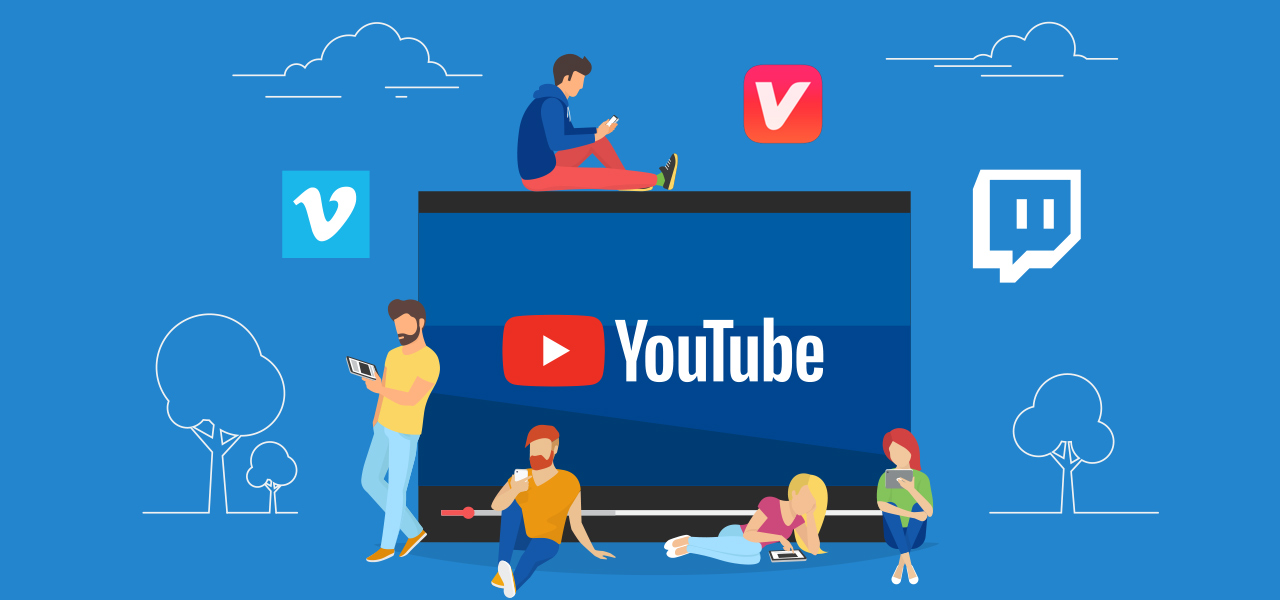
Source | YouTube alternatives
Here are some excellent YouTube alternatives to incorporate into your video marketing strategy–
Vimeo
Vimeo is a popular online video platform that provides a space for users to upload, share, and view high-quality videos. Launched in 2004, Vimeo distinguishes itself from other video-sharing platforms by prioritizing creative and professional content.
It has become a go-to platform for filmmakers, artists, and content creators who appreciate its emphasis on video quality and artistic expression.
Vimeo offers the ability to upload and share videos in high definition, customize video settings, and engage with a community of like-minded individuals. Additionally, Vimeo provides tools for creators to monetize their content, making it a versatile platform for both personal and professional video sharing. Its ad-free, professional environment attracts viewers interested in unique and original videos.
With a vast user base, Facebook provides a versatile space for creating and sharing videos. Users can upload and share videos on their profiles or within groups, making it a multifaceted platform for personal connections, business promotions, and community engagement.
Facebook Live allows for real-time video streaming, fostering interactive communication. The platform’s algorithm prioritizes video content, making it an influential space for content creators, businesses, and individuals to connect, share experiences, and reach a broad audience..
Instagram is a widely popular social media platform that centers around photo and video sharing. Launched in 2010, it has evolved beyond its initial emphasis on static images to incorporate short video content through features like Instagram Stories and IGTV.
Users can create and share engaging videos, ranging from brief updates to more polished productions. The platform’s visual nature and diverse filters make it a favored space for creative expression, influencing trends in lifestyle, fashion, and entertainment.
LinkedIn, established in 2003, is a professional networking platform primarily known for connecting individuals in the business and career sphere. While traditionally focused on professional networking and job searching, LinkedIn has embraced video content. Users can share and create videos to showcase their expertise, company culture, or industry insights. It has become a valuable tool for personal branding, networking, and business promotion, allowing professionals to share dynamic content within a business-oriented community.
TikTok
TikTok, a sensation since its global launch in 2018, is a short-form video platform that has redefined social media with its addictive and creative content. Characterized by its algorithm-driven “For You” page, TikTok enables users to create and share 15 to 60-second videos set to music. The platform has become a hub for trends, challenges, and user-generated content, appealing to a broad demographic. Its success lies in its simplicity and the ability for users to showcase their creativity in a highly engaging and rapidly growing social space.
X
X, formerly Twitter, founded in 2006, is a microblogging platform that limits posts to 280 characters. While primarily text-based, X has embraced video content through features like X Fleets and the ability to share videos directly in tweets. Users can create and share short video clips to convey messages, share updates, or engage with their audience. X’s real-time nature makes it a go-to platform for quick, concise video content, making it an essential tool for news, trends, and direct communication in the social media landscape.
Best Video Marketing Strategies for YouTube Alternatives
Without further ado, let’s look at best video marketing strategies for YouTube alternatives:
Vimeo Video Marketing Strategy
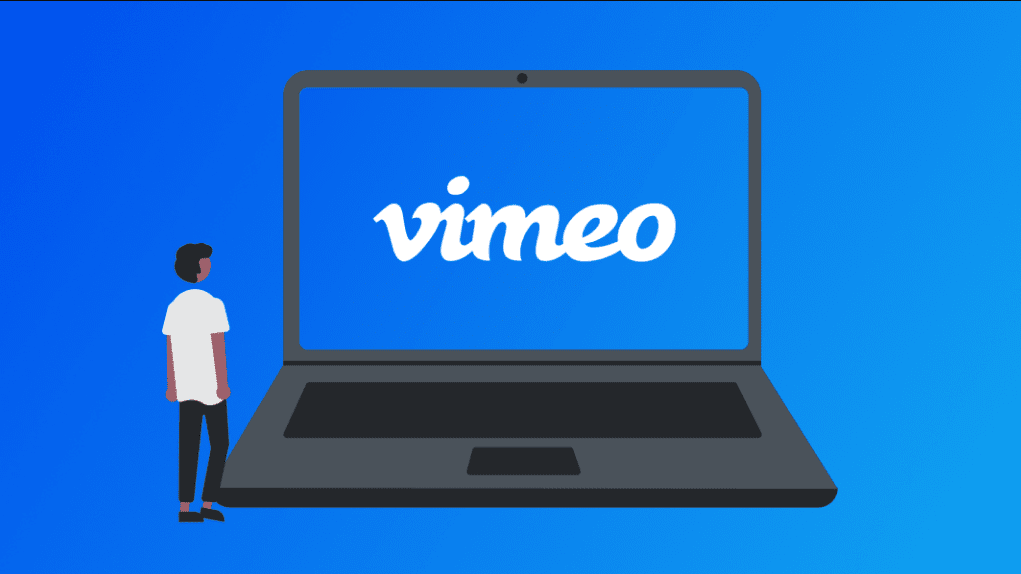
Source | Vimeo video marketing strategy
Vimeo, a premium video-sharing platform, presents compelling opportunities for marketers seeking a polished video hosting solution.
Here are some effective strategies for effecting video marketing on Vimeo video:
- Elevate your Vimeo video marketing by optimizing video titles, descriptions, and tags. This boosts discoverability within Vimeo’s search engine, enhancing your content’s visibility.
- Extend your reach by promoting your Vimeo videos across various platforms, including your website, blog, email newsletters, and social media channels. Incorporate clickable embeds, links, or video highlights to engage your audience effectively.
- Harness Vimeo’s privacy settings to tailor your video’s audience. Some videos can be made public to reach wider audiences, while others can remain private for lead generation and selective viewing.
- Leverage Vimeo’s analytics tools to evaluate video performance and engagement levels. Focus on content styles and topics that resonate with your audience, driving better results.
- Establish a distinctive Vimeo channel as a central hub for all your company’s videos. Personalize it with your logo, brand colours, and messaging to reinforce your brand identity.
- Engage with your target audience by joining Vimeo groups relevant to your industry or niche. This allows you to connect with an already interested and active community.
In contrast to YouTube, Vimeo provides ample storage space and bandwidth for high-quality videos. Business and professional purposes often prefer Vimeo over YouTube.
Facebook Video Marketing Strategy

Source | Video marketing beyond YouTube: Facebook
Facebook, a social media giant, offers a vast audience for video content. Here’s a guide on developing a successful video marketing strategy for Facebook:
- Share videos that provide value, insights, and expertise related to your industry. Establish your brand as an authority by creating content that addresses current industry trends and challenges.
- Showcase the human side of your brand by featuring company culture and behind-the-scenes footage. Introduce team members, showcase achievements, and offer glimpses into day-to-day operations to create a more relatable brand image.
- Take advantage of Facebook’s video features, such as Facebook Live and Facebook Video Ads. These features enhance content visibility and allow you to reach a broader and diverse audience on the platform.
- Craft compelling video descriptions with relevant keywords to improve searchability within the platform. Include a clear call-to-action (CTA) in your descriptions to encourage engagement, such as likes, comments, or shares, and drive traffic to your website.
- Utilize Facebook Insights to monitor the performance of your video content.
Analyze the data to understand audience engagement, and use these insights to refine your strategy, focusing on content that resonates most with your Facebook audience.
Instagram Video Marketing Strategy
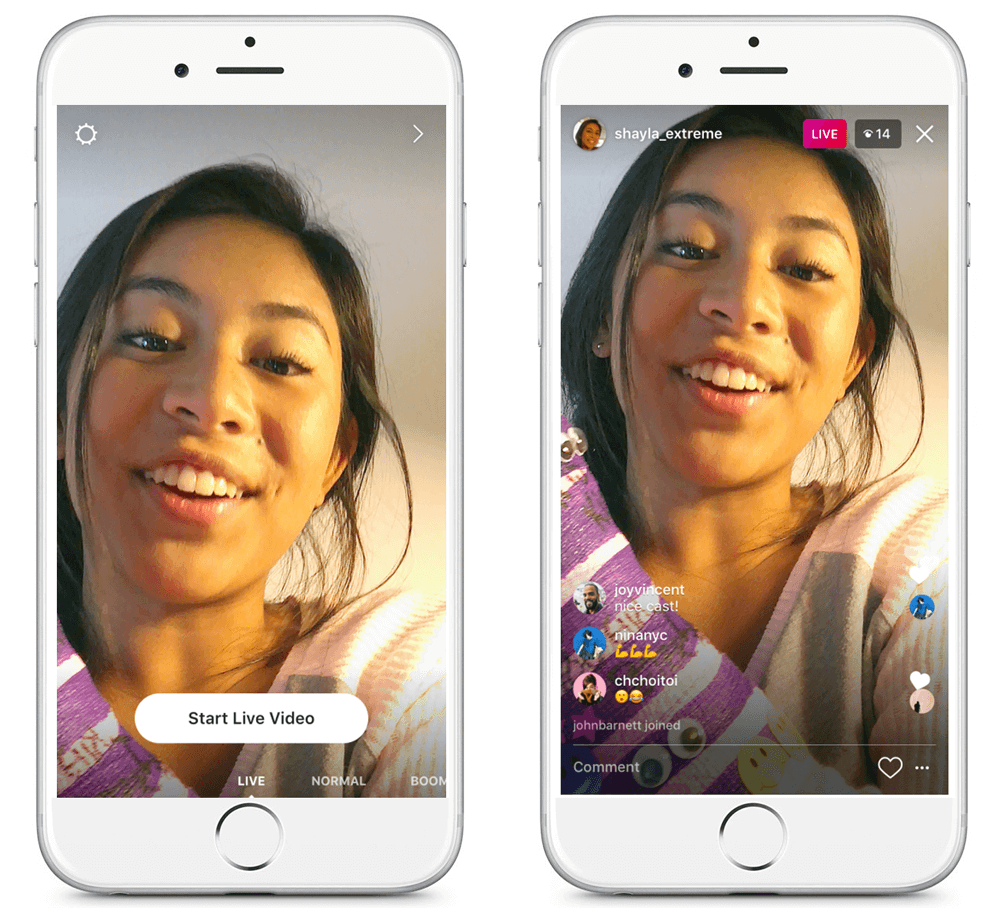
Source | Video marketing beyond YouTube: Instagram
Instagram has evolved into a powerful visual platform with over a billion monthly active users. Crafting an effective video marketing strategy on Instagram involves the following best practices:
- Identify your target audience on Instagram and understand their preferences. Tailor your video content to resonate with the demographics and interests of Instagram users.
- Utilize Instagram Stories, IGTV, and Reels to diversify your video content. Leverage Instagram’s interactive features, such as polls, questions, and countdowns in Stories to engage with your audience.
- Invest in high-quality visuals and aesthetics that align with your brand. Use creative storytelling techniques to capture attention within the first few seconds.
- Incorporate relevant and trending hashtags to increase the discoverability of your videos. Create a branded hashtag for your campaigns to encourage user-generated content.
- Collaborate with influencers or partners to expand your reach. Engage with your audience through comments, direct messages, and by participating in conversations on the platform.
- Maintain a consistent posting schedule to keep your audience engaged. Experiment with different video formats to identify what resonates best with your audience.
LinkedIn Video Marketing Strategy

Source | Video marketing beyond YouTube: LinkedIn
LinkedIn has become a professional networking hub, and video content is increasingly popular on the platform. Here’s how to develop a successful video marketing strategy for LinkedIn:
- Share videos that provide value, insights, and expertise related to your industry. Position your brand as a thought leader by creating content that addresses industry trends and challenges.
- Humanize your brand by showcasing company culture and behind-the-scenes footage. Introduce team members, highlight achievements, and share glimpses of day-to-day operations.
- Take advantage of native LinkedIn video features, including LinkedIn Live and LinkedIn Video Ads. These features can enhance the visibility of your content and reach a broader professional audience.
- Craft compelling video descriptions with relevant keywords to improve searchability. Include a call-to-action (CTA) in your descriptions to encourage engagement or drive traffic to your website.
- Monitor LinkedIn Analytics to understand the performance of your video content. Use insights to refine your strategy and focus on content that resonates with your LinkedIn audience.
TikTok Video Marketing Strategy
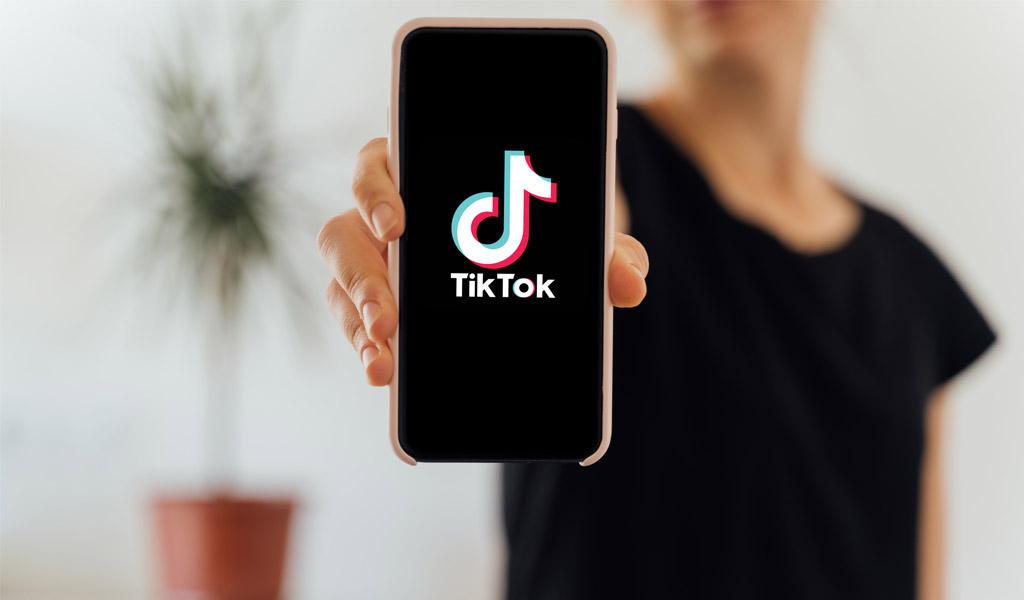
Source | Video marketing beyond YouTube: Tiktok
TikTok has exploded in popularity over the past few years with over 1 billion monthly active users. it offers major opportunities for brands to reach a large, engaged audience.
Best practices for effective TikTok video marketing include-
- Creating fun, entertaining, trendy videos that appeal to TikTok’s young user base. Consider participating in popular TikTok trends and challenges that align with your brand. The platform’s algorithm rewards engaging and original video content.
- Include relevant hashtags and keywords in your TikTok content to make it easier for people to find your brand’s videos.
- Partner with TikTok influencers in your industry for collaborative and sponsored TikTok video marketing content. This provides access to the influencer’s follower base.
- Use tools like filters, text overlays and stickers to make high-quality, branded videos that stand out as part of your TikTok video marketing.
- Optimize your video titles, descriptions, tags, etc., for SEO to improve the discoverability of your TikTok content on TikTok’s search and For You page.
- Run TikTok ad campaigns to expand your reach and engage new demographics outside your current follower base. TikTok’s targeting options allow for precision ad targeting.
TikTok’s short-form vertical video style stands out from YouTube’s longer format. TikTok also offers more opportunities for viral videos through challenges and trends.
Brands wanting to reach Generation Z consumers should strongly consider TikTok video marketing as part of their overall video marketing strategy.
X Video Marketing Strategy
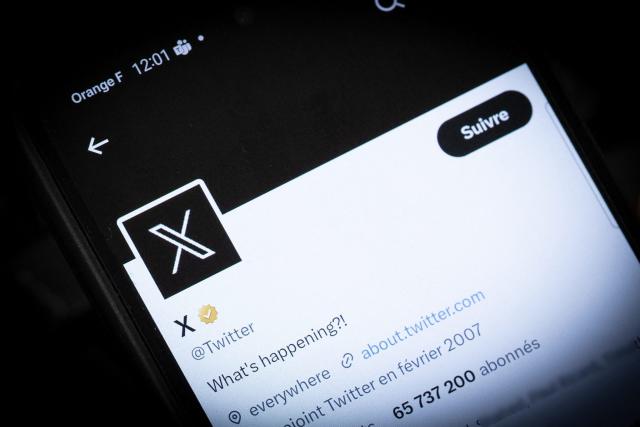
Source | Video marketing beyond YouTube: X
X (formerly Twitter) is known for its real-time engagement and brevity. Crafting an effective video marketing strategy on X involves the following best practices:
- Keep videos concise and to the point, as X users prefer short, easily digestible content. Use compelling visuals and captions to grab attention quickly.
- Create video threads to tell a more extended story or share a series of related content. This can increase engagement and keep your audience invested in the narrative.
- Participate in trending hashtag conversations by incorporating relevant videos. This can amplify the reach of your content and connect with a broader audience.
- Encourage users to create and share content related to your brand. Retweet and engage with user-generated videos to foster a sense of community.
- Explore X Ads to promote your video content to a targeted audience. Use X Analytics to assess the performance and refine your ad strategy.
Key Video Marketing Trends For 2023

Source | Video marketing trends in 2023
Here are the top video marketing trends you need to know:
Short-Form Video Dominance
Short-form content tailored for platforms like TikTok, Instagram Reels, and YouTube Shorts will only grow in importance. Keep videos concise, mobile-friendly, and packed with great visuals.
Live-Streaming Growth
Live video presents unique opportunities to engage your audience in real-time. Find creative ways to incorporate live streams into your strategy across platforms like Instagram, Facebook, LinkedIn, and YouTube.
Proliferation of Video Creation Tools
Advancing software means high-quality video creation is more accessible than ever. Take advantage of DIY tools and artificial intelligence-enabled solutions to develop original branded video content at scale.
Interactive Videos
Videos with clickable product tags help drive action and conversions. Look for ways to make your video marketing more interactive and transactional.
Personalized Video
Leveraging customer data to deliver customized video experiences is becoming more viable. Seek opportunities to tailor video messaging to specific customers, especially in marketing automation.
Conclusion
In conclusion, it’s clear that video marketing beyond YouTube has become a necessity. Relying solely on YouTube can limit your reach, missing diverse and engaged audiences on alternative platforms.
Embracing video marketing beyond YouTube isn’t just strategic; it’s necessary for captivating diverse audiences, fostering engagement, and staying ahead of digital marketing trends.
Subscribe yMedia for more insights into the evolving world of marketing and business.